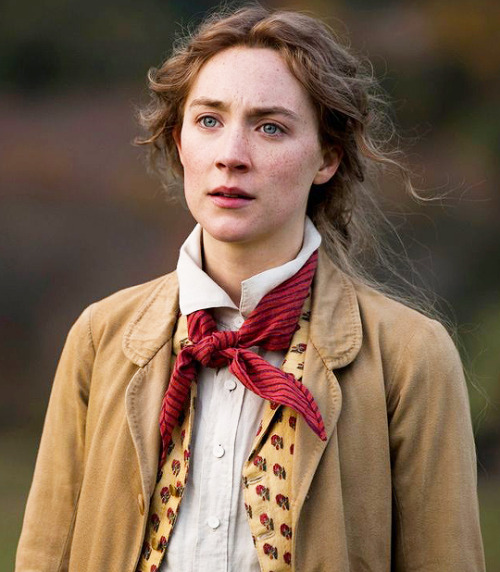Ana Hein // Blog Writer
The film is a perfect adaptation of the novel, except in one regard: its ending. The novel ends with Jo subverting reader expectations by marrying a man nearly twenty years her senior who harshly criticizes her work, giving up her writing, and opening a school for boys on Aunt March’s bequeathed property. It’s an ending that undermines much of what Jo stands for and what make her so remarkable as a heroine: her drive, passion, and knowledge of self. It’s an ending that Alcott didn’t even like; she was forced to write it by her publisher. Her original ending had Jo remain a “literary spinster” like herself. The movie does still include the romance with Professor Bhaer, but Bhaer is more respectful of Jo and her writing, saying he is only blunt in his criticism because he respects her and her talent so much, and he is considerably younger and more attractive than his book counterpart. As in the book, Bhaer intends to head to California, and at the persistence of Amy and Meg, Jo chases after him in the rain, intent on making her feelings known. Just as Jo exits the carriage with her

Saoirse Ronan as Jo March
squealing sisters inside, the film cuts to Jo sitting in her publisher’s office, defending the ending of her novel, Little Women. This is not the first adaptation to credit Jo with the creation of its source material–it makes perfect sense to do so since Alcott famously based the actual novel on her family, but it is the first break in the fourth wall as it does so. The publisher asks who the heroine ends up with, and Jo responds with, “Neither. She doesn’t end up with either of them… She says throughout the book she doesn’t want to get married.” The publisher prods some more, and Jo relents: “I suppose marriage has always been an economic proposition, even in fiction.” The film then cuts back to that moment at the train station. Jo finds Bhaer and kisses him underneath his umbrella. It’s pouring rain. Orchestral music plays in the background. Declarations are made. Cut back to the publishing office where the publisher declares the scene worthy of printing. The viewer has no idea if the scene actually happened to Jo or if it only happens to her self-insert heroine. It’s an out—not a cop-out—for Gerwig. She keeps the original ending of the book while still acknowledging its problems and the reality of marriage for women at the time and leaves it up to the audience to decide which ending they prefer.
But this is only part of the ending, the first half. The last half details Jo fighting for the rights to her novel and watching it be physically published before cutting to her new co-ed school as

The March Sisters (2019)
the camera pans through the set showing off all the major characters teaching. The last shot of the movie says it all: Jo holds her book, freshly bound in red leather, tightly to her chest, quietly joyful and relieved. It ends not with any romance, but with a woman achieving success and her life-long dream. Honestly, I love this ending. It feels, ironically, truer to the book than its own ending does.
There is a reason Little Women has endured for as long as it has. It’s a story about sisterhood, about coming into your own as a woman. Whatever kind of woman you may be—a Meg, Jo, Beth, or Amy—you are important. Gerwig’s film has this message at its very core, imbued into every aspect of it. And what more could a Little Women fanatic ask for?
